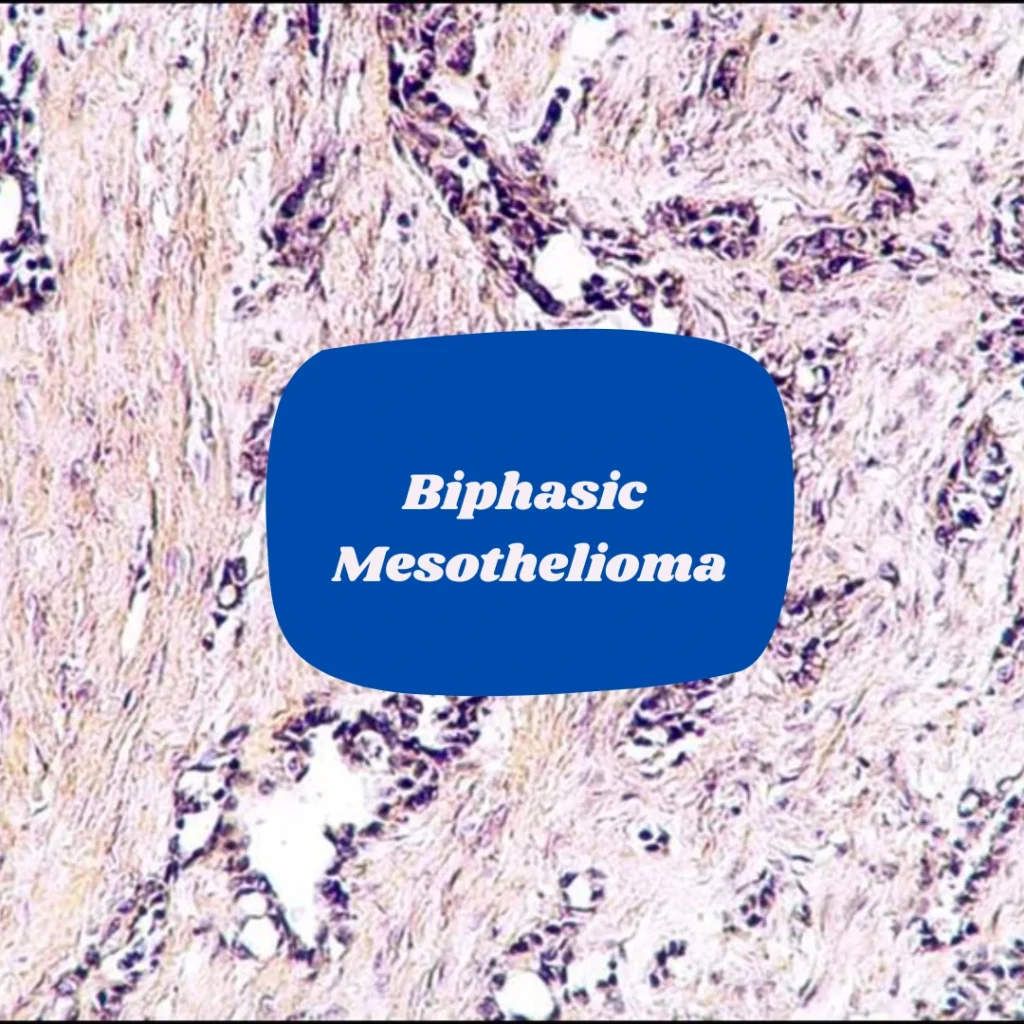Key takeaways: Biphasic mesothelioma is composed of two cell types: sarcomatoid and
epithelioid. This type of mesothelioma accounts for around 20-30% of all diagnoses. Because the
cell types vary in detectability and responsiveness to treatment, it’s important to distinguish the
ratio of the two to plan for an adequate treatment plan. Multimodal treatments, or using two or
more treatments in tandem, have the most success among biphasic patients.

What is Biphasic Mesothelioma?
Along with the origin sites of mesothelioma (like around the lungs or abdomen), mesothelioma is
also classified based on the types of cells that comprise it. Biphasic mesothelioma occurs when
two distinct cell types have a significant presence in the tumor; in this case, these are epithelioid
and sarcomatoid cells. There must be at least 10% of each type of cell present for a
mesothelioma case to be categorized as “biphasic.” Epithelioid cells are uniform in grouping,
have visible nuclei, and grow relatively slowly (when cancerous). Sarcomatoid cells do not have
a characteristic uniformity; they are irregular in size and tumor growth. Because they do not have
definitive edges like epithelioid cells do, sarcomatoid growths are much more difficult to
completely remove with surgery.
Biphasic mesothelioma is the second most common manifestation of mesothelioma, accounting
for about 20-30% of all mesothelioma cases. The most common form of mesothelioma is
epithelioid mesothelioma, which has the best prognosis and projected life expectancy. Given that
the biphasic manifestation also has epithelioid cells, the prognosis of the cancer is dependent
upon the ratio of epithelioid to sarcomatoid cells. Sarcomatoid mesothelioma is the rarest form of
mesothelioma and has the worst prognosis, as the cells are most resistant to treatment. So, if the
tumors are able to be visualized on a cellular level to determine the proportion of different cell
types, then doctors are better equipped to make treatment decisions. Sarcomatoid cells are
notoriously difficult to treat. Their growth patterns, lack of “predictability,” and typical late
detection make it markedly more difficult to both diagnose and treat biphasic mesothelioma.
Given the rarity of the biphasic manifestation, too–only researchers with a keen eye are able to
accurately diagnose biphasic mesothelioma. A biopsy is necessary for the cell type distinction of
mesothelioma (and its consequent treatment plan(s)).
Multimodal Treatment
The best course of action for biphasic mesothelioma is multimodal treatment, or a unique
combination of different techniques. Oftentimes, surgery and chemotherapy (or radiotherapy) is
used together most frequently and with the best results. Even though multimodal treatment has
its limitations, it had the highest success rate (quantified through survival time post-treatment)
among all biphasic mesothelioma treatment plans. It is important that treatment plans are created
with patient-specific needs and goals in mind, especially concerning the cellular makeup of
biphasic tumors.
If you or a loved one has been diagnosed with an asbestos-related disease, please call
(800)-505-6000 for legal help. For more information, fill out the form on our Contact Us page.
Sources:
Lococo, F., Torricelli, F., Lang-Lazdunski, L., Veronesi, G., Rena, O., Paci, M., Casadio, C.,
Piana, S., Novellis, P., Di Stefano, T. S., Ciarrocchi, A., & Billè, A. (2020). Survival
results in biphasic malignant pleural mesothelioma patients: A multicentric analysis.
The Journal of Thoracic and Cardiovascular Surgery, 159(4), 1584-1593.e2.
https://doi.org/10.1016/j.jtcvs.2019.08.027
Schulte, J. J., & Husain, A. N. (2020). Update on the pathologic diagnosis of malignant
mesothelioma. Translational Lung Cancer Research, 9(3), 917–923.
https://doi.org/10.21037/tlcr-19-620